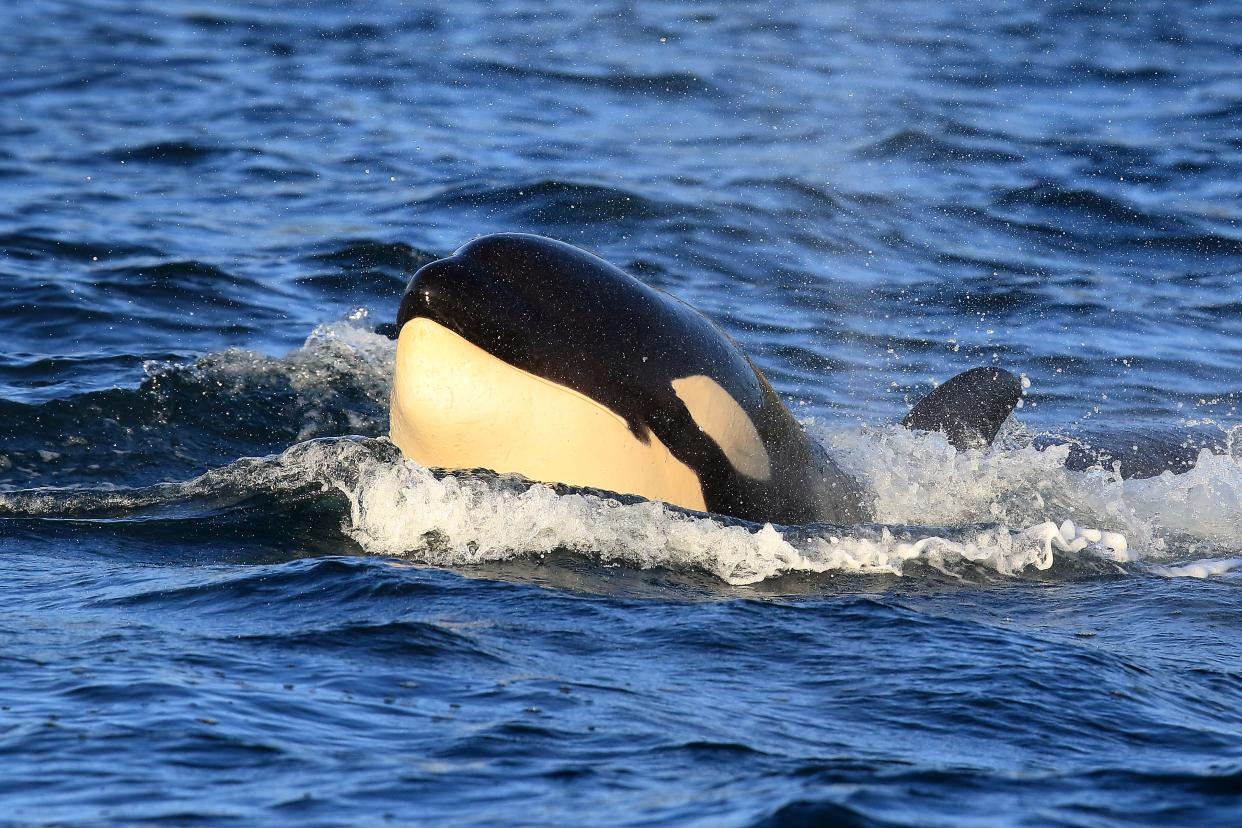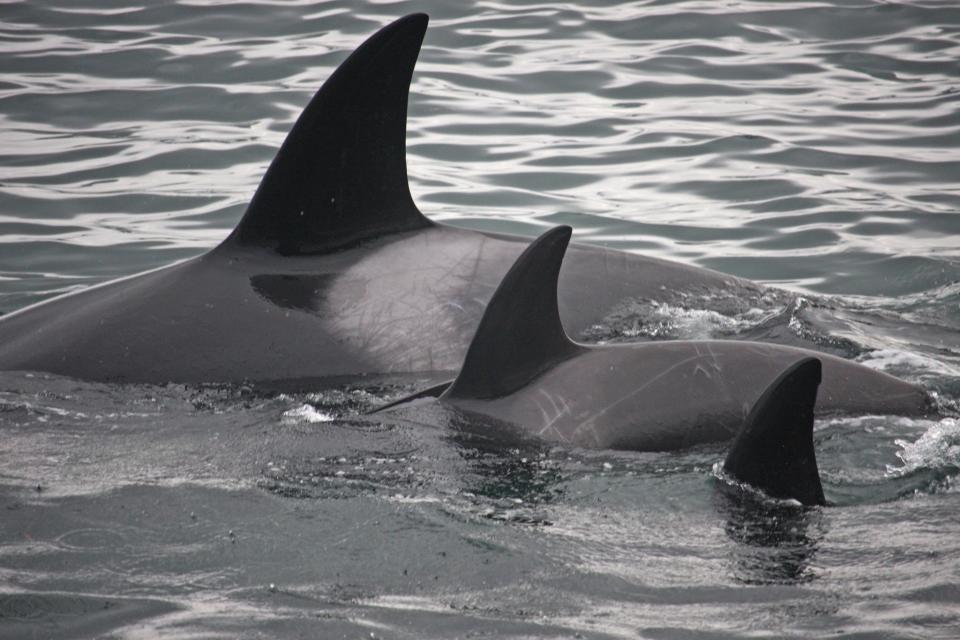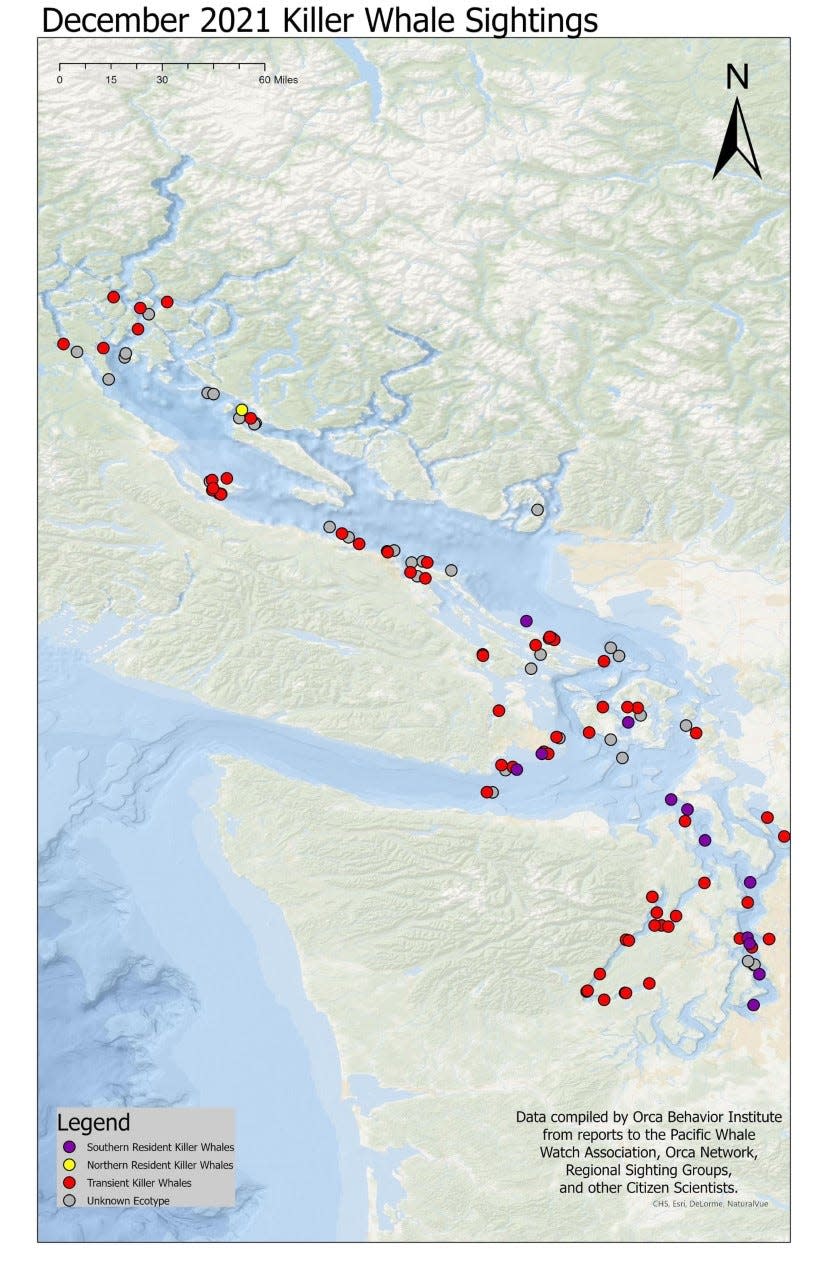Transient whales, whose Salish Sea visits are increasing, spending time in Hood Canal

The number of people who saw Bigg's killer whales in the area jumped last year, with over a thousand unique sightings during 2021.
According to Pacific Whale Watch Association (PWWA), Bigg’s killer whales were most frequently documented in the region last year, followed by humpback whales, gray whales and minke whales.
Endangered Southern Resident orcas were encountered least often. Their declining presence in the Salish Sea has been correlated to a decrease in Fraser River Chinook, according to PWWA naturalists.
Monika Wieland Shields, director of Orca Behavior Institute on San Juan Island, said there was a record-breaking presence of Bigg’s killer whales in 2021. Based on reports from professional whale watchers, regional sightings groups and shore-based observers, Bigg’s killer whales were documented in the Salish Sea during 1,067 unique sightings across 329 days. The previous record, set in 2019, was 747 unique sightings. On the other hand, salmon-eating Southern Resident killer whales were documented on just 103 days, or 28% of the year.
The Bigg’s killer whale population, which feeds on marine mammals like seals and sea lions, is growing at more than 4% per year, according to the Department of Fisheries and Oceans Canada.
“It has been incredible to witness the continued rise of Bigg’s killer whales in the Salish Sea,” Shields said. “In 2021, there were days when we documented 10 different groups of Bigg’s throughout the region totaling more than 50 whales.”
Spending time in Hood Canal
Bigg's killer whales have been spending some time in Hood Canal, breaching and swimming for those taking pictures and watching from the shores.
Some transient orcas spent almost five weeks there from late November to late December, Gless said. They went through the Hood Canal bridge to nearly the end of the canal near Belfair. The family that visited was the T68Cs — a family of five. The mother, T68C, was born in 1992. Her four children were with her, with the youngest born in 2020. This group is more typically found in Southeast Alaska, Gless said.
“It’s not a common group of transients that come here but I think they found a haven of food and just stayed,” said Sarah Hanke of Puget Sound Express.

It’s not extremely common for the whales to stay in the Hood Canal area so long, Gless said, but there have been periods where different groups have visited for a while. It’s not uncommon for them to visit a day or two, but in 2005 a group spent 172 days in the area. In 2003, a few whales stayed in Hood Canal for 59 days, Gless said. In 2020 they stated about 10 days, and in 2021 it was estimated they stayed about 30 days. It’s likely the number of seals attracting the orcas and keeping them around, Gless said.
Hanke said there have been a lot of changes in the whale population over the 37 years the company has been doing whale watching. There’s been a higher population of harbor seals and porpoise, Hanke said, so more groups of whales have been visiting Hood Canal to feast.
“There’s so much food for them,” Hanke said. “It’s a seal haven in Hood Canal.”
She said during one tour they witnessed a “National Geographic moment” when an orca killed a bald eagle that simultaneously swooped down to catch a fish.
“What the wildlife does is completely different every day,” she said.
'Encouraging year for whales'

Humpback whale calves also came in record numbers last year. Twenty-one calves accompanied their mothers on their journey through the Salish Sea. Humpbacks were documented 301 days in 2021, but by now, most have returned south to their breeding grounds.
Technology has brought people together in reporting whales, Hanke said. Everyone is a little more aware and observant, often posting photos on Facebook and in different groups, she said.
The overall population of both orcas and humpbacks is increasing, Hanke said. Every time a humpback brings a baby with them to the Salish Sea, it means that baby will return to those feeding grounds that their mother has shown them.
"Big picture, 2021 was an exciting and encouraging year for whales in the Salish Sea. We look forward to what 2022 may bring," Gless said.
This article originally appeared on Kitsap Sun: Orcas, whales spotted in Hood Canal and Salish Seas more often

